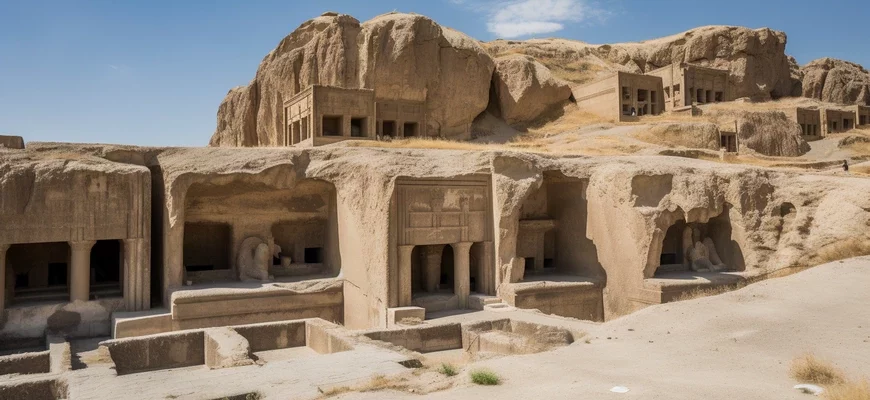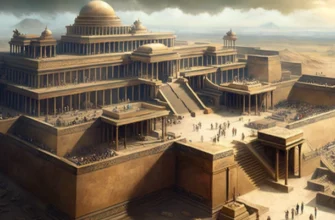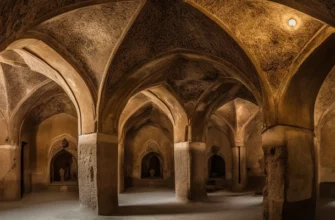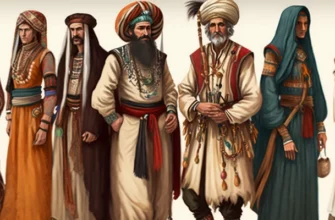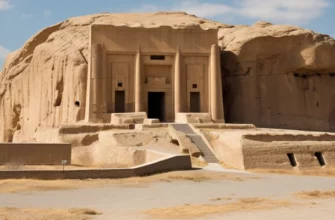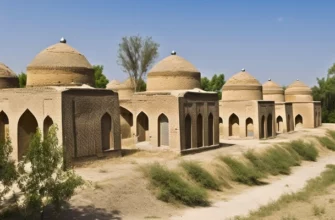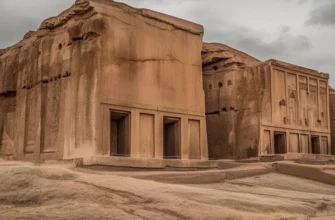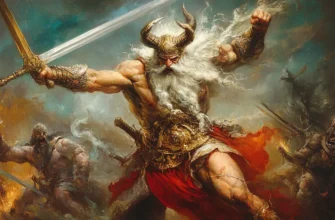In the second millennium BC, the territory of modern Iran belonged to the Scythian-Sarmatian tribes. According to legend, the first states appeared during this period, in particular Elam, which became influential in the region. In 728 BC, the state was conquered by Sargon II of Assyria, and later the territory of Iran was captured by the Persians. At this time, the foundations of Persian culture and statehood were formed, which during the Achaemenid Empire became one of the largest in the world. In the second millennium BC, religions also developed actively, in particular Zoroastrianism, which became the state religion of the Persian kings.
Description of the periods of development of ancient Iran
Ancient Iran consisted of various peoples and states that existed on the territory of modern Iran since ancient times. In general, its development can be divided into several periods:
The period before the conquest by the Achaemenid Empire – includes the Elamite kingdom and Persian tribes.
The Achaemenid Empire (550-330 BC) – a period of prosperity of statehood and culture, when power passed into the hands of the Achaemenid royal dynasty. This period is known for its great constructions, such as Persepolis, and the expansion of trade relations.
The period after the fall of the Achaemenid Empire (330-247 BC) was a time of wars for power and the stabilization of new state formations, in particular the Seleucid and Parthian empires.
The Parthian Empire (247 BC-224 AD) was a period of state consolidation and cultural development, marked by wars with Rome and growing influence in the West.
The Sassanid Empire (224-651 CE) was a period of rising statehood and cultural development, especially in the arts and architecture. At this time, Iran played an important role in trade and political relations with neighboring countries.
Description of the political system of ancient Iran
Ancient Iran had many different political systems throughout its history, but the basic principles were the involvement of broad sections of the population in government and the use of religion as a tool to legitimize power.
In ancient times, Iran consisted of different states, each with its own unique political system. However, during the Persian period (550-330 BC), the most important state was the Achaemenid Empire, which had a monarchical form of government. The monarch, who exercised complete power, acted as the “Great King,” which was common in the ancient East.
During the reign of the Achaemenids, power was centralized and entrusted to neighboring satraps (governors) who acted in the interests of the central government. The satraps themselves were usually appointed from noble families, but the most important feature of their policy was to maintain peace and order in the regions they ruled.
In addition, the Achaemenids used a system of “royal decrees” (most often known as “royal messages”) to emphasize their power and legitimize it among the people. These messages included detailed instructions for satraps and other officials on how to govern countries and promote the ideology of the Achaemenid state.
Overall, ancient Iran had a rather complex political system based on monarchy and strong centralization of power, but also involving the upper echelons of society in governance and using religion to maintain stability and legitimize power.
During the Sassanid Empire (224-651), which succeeded the Achaemenid Empire, there was a decentralization of power and an increase in the influence of the nobility. Royal power became less centralized, and monarchs were replaced by dynasties, which often led to political crises and internal conflicts.
The Sassanids revived the ancient Persian tradition of assemblies (majlis), in which the upper echelons of society participated in decision-making regarding the management of the state. In addition, the Sassanid period differed from the Achaemenid period in that royal power strengthened its influence through the church (the Zoroastrian religion), which became the state religion and an instrument of legitimizing power.
In general, the political system of ancient Iran was very complex and changed depending on the era and the dynasty that came to power. But despite this, state power always remained centralized, and the upper echelons of society were involved in the management of the country, which allowed for the stability and efficiency of the state apparatus to be maintained.
Description of wars and conflicts during the second millennium BC
Ancient Iran in the second millennium BC was the scene of many wars and conflicts that influenced its history and culture. Here are some of the most important ones:
Wars with Mesopotamia: Throughout the history of ancient Iran, there were numerous wars with Mesopotamia (modern-day Iraq), caused by competition between the two regions for control of trade and resources. For example, one of the most famous wars was between the Achaemenid Empire and Babylon in the 6th century BCE, which resulted in the defeat of Babylon and its subjugation to the Persian Empire.
Wars with Greece: Ancient Iran was also in conflict with Greece, which was caused by competition for power and territory. The most famous war was the war between the Persian king Cyrus II and the Greek cities in the 5th century BC, which led to the defeat of the Persian army at the Battle of Marathon.
Wars with the Scythians and Sarmatians: The Scythians and Sarmatians, peoples who lived north of Iran, were a constant threat to the ancient Iranians. Numerous wars with these peoples were caused by competition for territory and resources. For example, in the 4th century BC, there was a war between the Persian king Artaxerxes II and the Sarmatians, which resulted in the defeat of the Persian army.
Civil war between the Achaemenid dynasty and Sparta: In the 5th century BC, the Achaemenid dynasty faced attempts at rebellion and secession by individual regions from the state. One of the most famous rebellions was the Ionian Revolt against Persian rule, which led to war between Persia and Sparta. As a result of the war, the Persian army was defeated, and Sparta became the leading power in Greece.
War with Alexander the Great: In the 4th century BC, the Persian state faced an invasion by Macedonia under the leadership of Alexander the Great. The war, which lasted more than 10 years, was very bloody and led to the fall of the Persian Empire.
All these wars and conflicts had a significant impact on the history and culture of ancient Iran, and they helped create some of the world’s most prominent empires. For example, after the defeat of the Persian Empire by Alexander the Great, a new Seleucid dynasty was established in Iran, which lasted for over 200 years and left its mark on the history of the region.
Conclusions
Ancient Iran was a very influential and important state in world history. With its vast territory, developed culture, and ingenuity, Iran played an important role in trade, politics, science, art, and religion.
Among the main achievements of ancient Iran were the creation of one of the first monotheistic religions, Zoroastrianism, the development of magic and astronomy, the construction of impressive architectural structures such as Persepolis, and the creation of a powerful and effective army.
Throughout its history, Iran has played an important role in world politics, invading and expanding its territories, facing wars and uprisings, but also achieving success in science, art, and religion.
Overall, ancient Iran was a very interesting and diverse state that left a significant impact on world culture and history.
